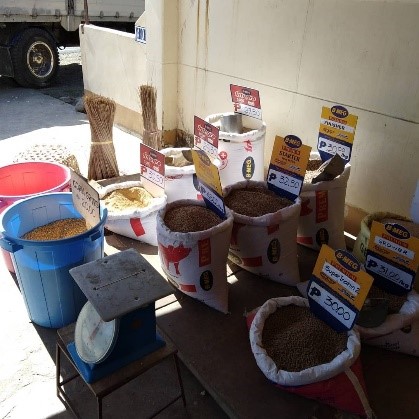Internship experience about the cassava value chain in the Philippines
18-10-2018Blog from Carla Wefers about her 4 month internship at Agriterra
Four months long was my stay in the Philippines. In April, I started my travel and since August I am back home. It was an interesting time during which I learned much about various aspects of the Philippine culture, its people and surroundings and of course a lot more about the cassava sector of the country and the stakeholders involved in it. I also got more insights into doing research, having interviews and focus group discussions and in the end connecting the different information, I gathered, to a holistic picture.
First, I stayed at the northern part of the country in Quirino province. About seven weeks I lived and worked with Abrasa, Multi-Purpose Cooperative (MPC). I talked to the employees, visited their farmers, their Warehouses and Agri-vet stores. They started selling cassava to the feed company San Miguel Corp and within 8 years they grew their volume of deliveries enormously. They are one of the three biggest suppliers in terms of volume of the region, yet they still have some problems to overcome.
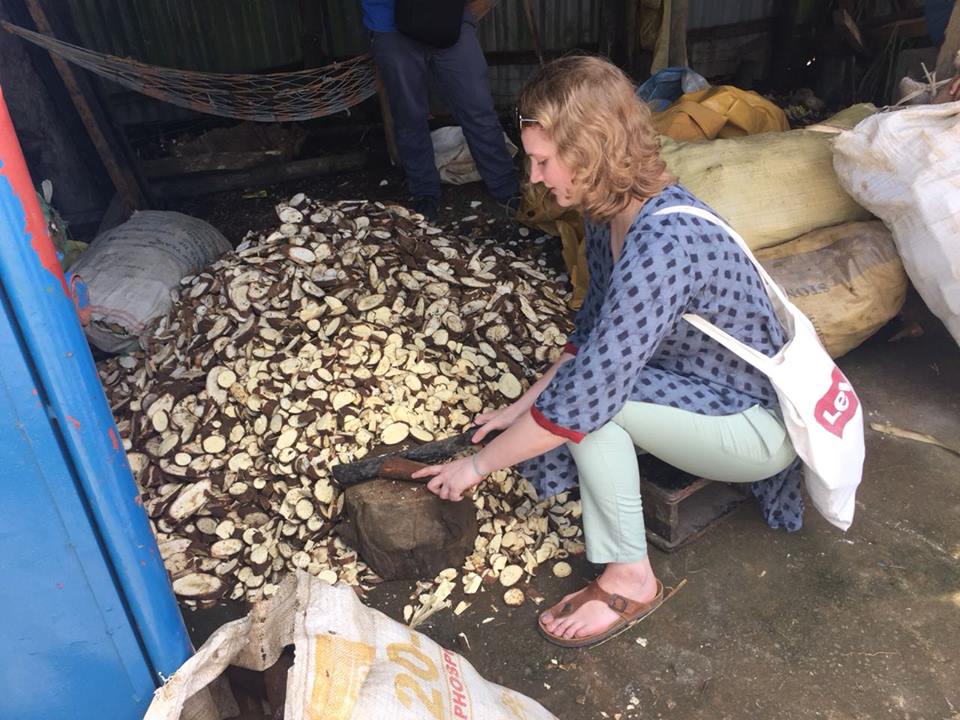
Typical practices in the Philippines: manually chipping the cassava tubers
The competition is high and in times of difficulties farmers sometimes decide to go back to corn farming. Unfortunately, cooperative collaboration is limited. The results of the study can be used to provide this needed mechanism to inspire and steer collaboration and possibly partnerships among these client coops of Agriterra in the Philippines.
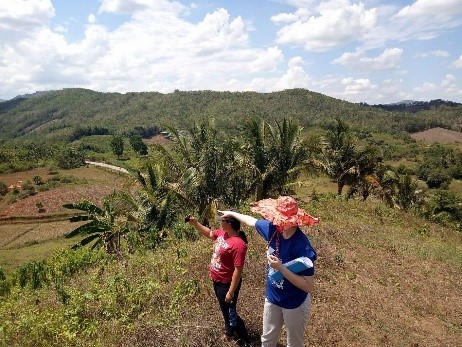
At Quirino province, in the Philippines, working with Abrasa Multi-Purpose cooperative
The second half of my stay was further to the south, in a very different place called Leyte. There, I stayed another 7 weeks with the Multi-Purpose Cooperative, Fatima. They, likewise, sell cassava to the same buyer, San Miguel Corp. The difference here is, that although Fatima MPC is the largest supplier of San Miguel in the region, their volume is still much smaller than that of Abrasa, but they are on track to increase it.
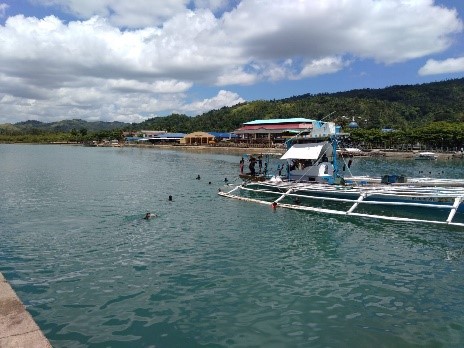
At Leyte, in the Philippines, working with Fatima Multi-Purpose cooperative
With visionaries as their employees, they want to support their farmers to have higher productivity as well as to recruit new farmer groups to start planting cassava. The farmers, who I interviewed in Leyte, were always planting cassava due to the assured market. Prices are not fluctuating like they are for corn for example, which is a big advantage for both coops and farmers.
My main task was to assess the cassava industry, therefore I would like to share with you the following simple overview of the cassava value chain:
Here you see the cassava tubers after harvest.
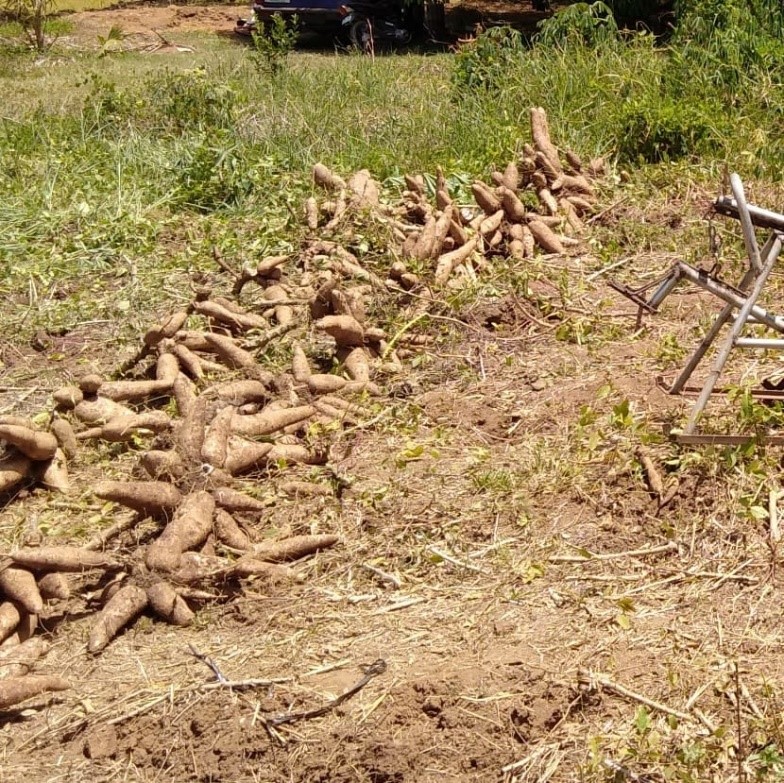
The raw tubers are chipped manually or by machines...
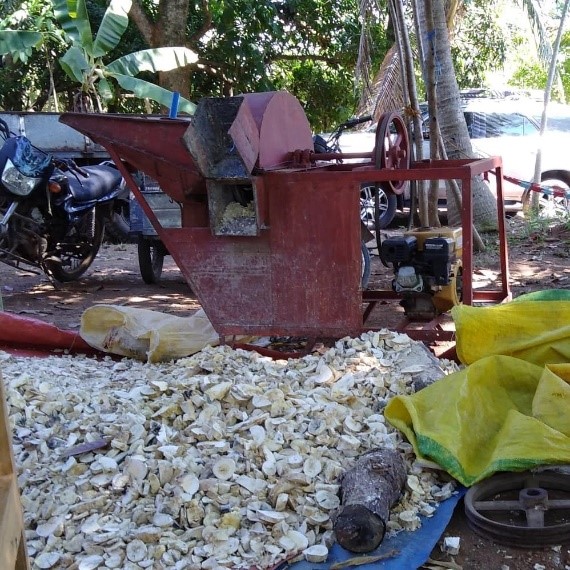
and later the chips are left to dry on the ground.
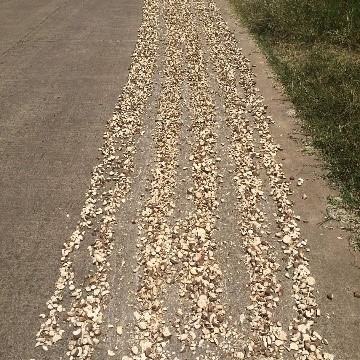
Then they pack and transport them to the buyer,
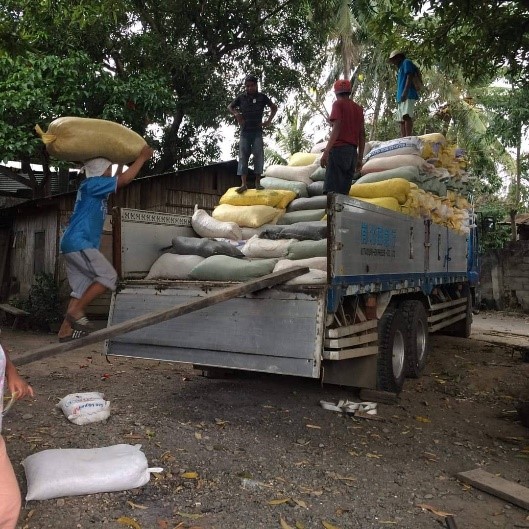
who turns them into feed.
